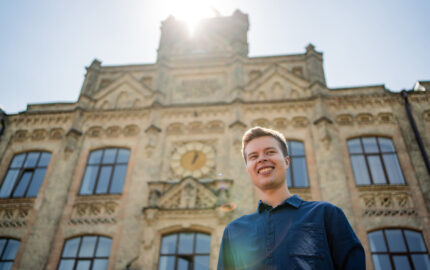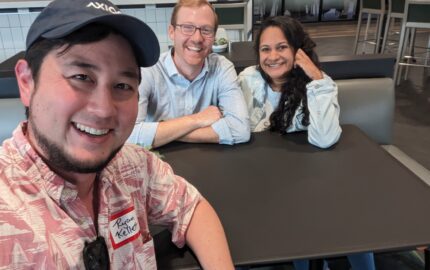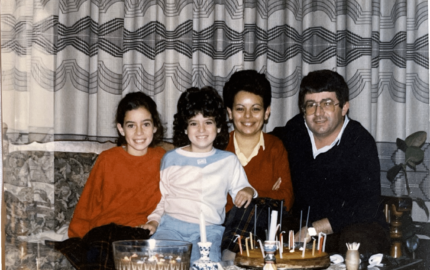When I started out in network news, I was all about the big, lead story. There’s a sense in most newsrooms that those are the ones that are the most important, the most meaningful.
I’m not a political junkie, but I’ve covered the primaries and conventions in each of the election cycles I’ve worked as a producer for ABC and NBC News. I’ve produced interviews with Barack Obama and his opponents and with presidents Bill Clinton and George W. Bush. I went to Haiti to cover the 2010 earthquake, to Egypt to cover the revolution, and to Canada’s Oil Sands to cover the story behind the Keystone XL pipeline controversy. My job has taken me to Madagascar and the Galápagos Islands.
I loved those assignments, but I’ve come to realize I love the small stories more, stories like Hunter Gandee’s. My on-air colleague Kate Snow and I met Hunter last year, when the middle-school wrestler decided to carry his brother Braden on his back from their home near Toledo to the University of Michigan in Ann Arbor, 40 miles away. Braden has cerebral palsy, and Hunter wanted to raise awareness about the disorder. It took them two days, and the walk was tough at times, especially when Braden’s legs started chafing in the sling his physical therapist had gotten him to try to help keep him comfortable. But the boys made it, supported by friends and family—and taught us all a lesson in strength and resilience.
We also met Denise, a mom in Missouri, whose sons—both heroin addicts—lived with her. She kept a vial of Narcan by her bed, a drug that can reverse an opioid overdose, even though it was illegal for her to have it. She’s sent her sons to rehab and tried to help as best she can. Yet her older son, Ryan, was still using when we met him. He showed up high at one of our shoots, slumping in his seat, his eyes glazing over, and we understood why she was so afraid.
“Your kids are everything to you,” she told us through tears, “and my goal every day is to keep them alive. And so far I’ve succeeded.”
We made multiple trips to Moore, Oklahoma, a town that had twice been ripped apart by tornadoes. The last time, our story focused on Plaza Towers Elementary, the school where seven children had died. We examined the impact an F5 tornado had on the community a year after it hit.
Journalists might be tempted to think that we own the stories we tell, but in reality we don’t
We don’t usually get a lot of time on the evening news: the Plaza Towers story was two and a half minutes long and 368 words —that’s including the quotes. We managed to fit in sound from the school’s principal, two teachers, the family of a surviving student, and the parents of a victim.
They all had a part in the story, but on the day the piece aired, we were told the show was tight on time and asked to make cuts. I said no.
The thing I realized then was: This wasn’t our story. We walked into their town, saw the pain they were going through, and tried to claim it. There’s a real temptation to think that we own the stories we tell; that we see the bigger picture as journalists; that we write the endings. But in reality, we’re just connecting dots. And just as we have an obligation to report out the facts of a story, I believe we have a responsibility to be true to our subjects and represent them fairly.
That was never clearer to me than on the last big story I worked on before leaving NBC to start my Nieman fellowship.
Five-year-old Jacob Lemay is like all the other kids in his class—gregarious, fun-loving, and well-spoken. But Jacob is transgender. His parents, Mimi and Joe, let us into their home, introduced us to Jacob and his sisters, and helped us get access to his school so that we could see Jacob interact with other children.
“Nightly News” and “Today” each gave us nearly five minutes for the story. The version we posted online reached 35 million people on Facebook—16 million video views, 200,000 likes and shares, 20,000 comments. These are the kind of numbers many of us hate to think about as journalists, but they are a testament to the enduring interest in strong, character-driven, narrative features.
During our interview, we asked Jacob’s parents why they’d decided to share their story so publicly. “If I speak up now and my voice joins the voices of other people who are telling their stories,” said Mimi, “then maybe this can change. But if I stay private and quiet as I am tempted to do, by my natural instinct to protect, then how can I expect the world to change for Jacob?”
And in many ways, I think that’s why I do what I do now. I believe that there are people out there who are doing incredible things to make a difference in the world. And if I can help shepherd their message—give a platform to their voices, bring light to what they are doing—then I think that’s the best contribution that I can make.


